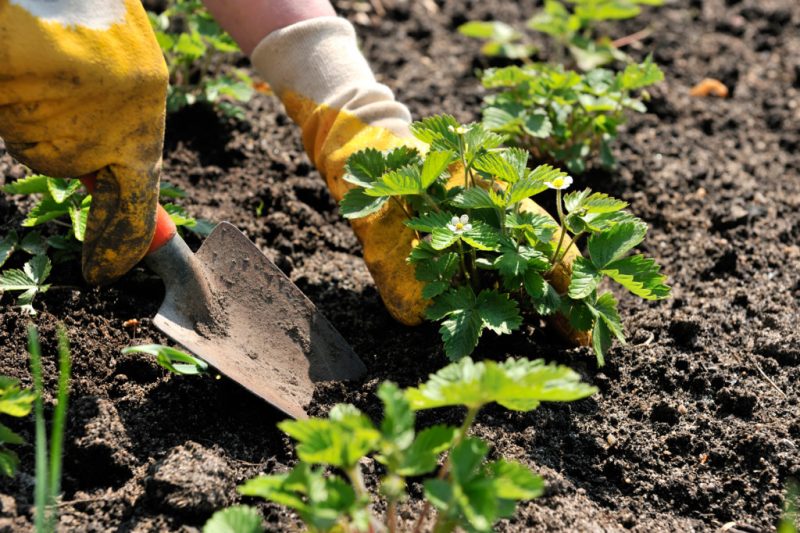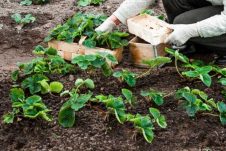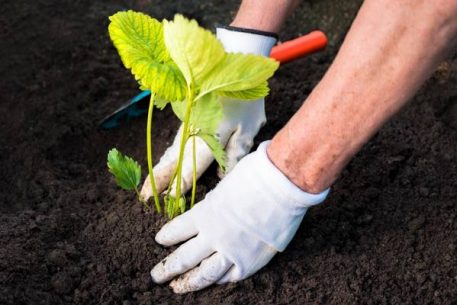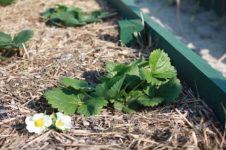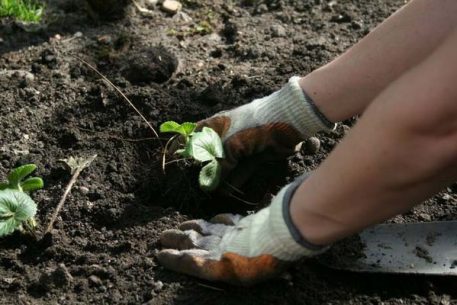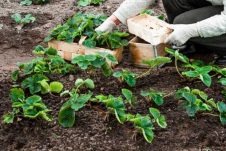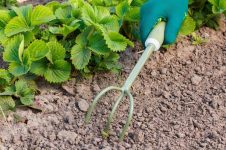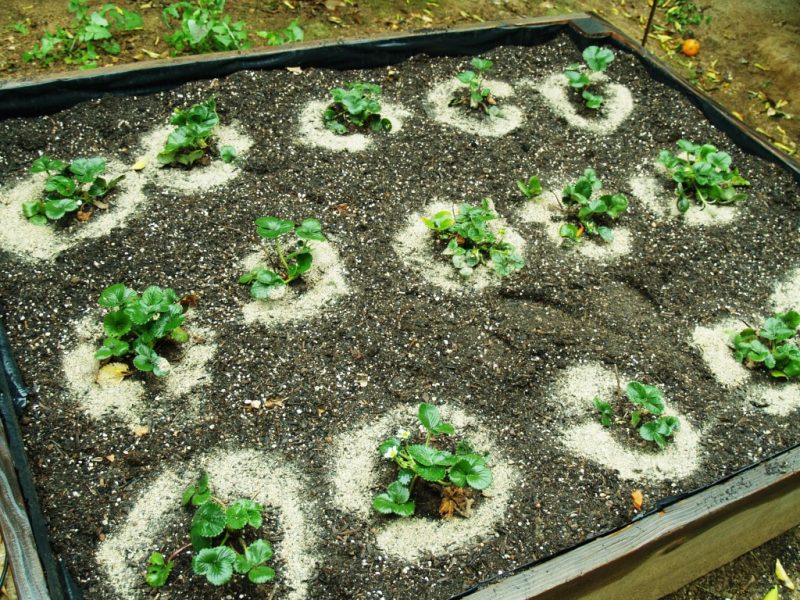A high-yielding berry crop needs a transplant annually or once every 2-3 years. Knowing when to plant strawberries in spring or autumn, you can choose the best time for a time-consuming event. The art of growing delicious fruits is available to everyone, only you need to remember the basic rules.
Material Content:
When is it better to transplant strawberries?
Gardeners and summer residents call strawberries different species of the genus Strawberry. Basically, these are three: garden (large-fruited), its varieties. It matures early, reproduces easily, responds to timely work with a good harvest. For successful cultivation, in addition to varietal qualities, watering and top dressing, the choice of the planting period is of great importance.
It is important to transplant plants to a new place with fresh soil in a timely manner. It is necessary to decide when it is better to hold this event - in spring or autumn, taking into account the climate and weather conditions of the region.
To determine exactly when you can transplant, you need to remember the dates of the first frosts in the fall and the dates of the last frosts in the spring for your area. In addition, you need to make sure that there is enough healthy planting material. When using their seedlings, water the plantation first. They dig up last year's young rosettes with well-developed roots 3-5 cm long and healthy leaves.
Fall
In the summer, young plants intended for transplantation are checked for diseases and pests. If necessary, carry out processing. In addition, strawberries are watered and fed. New flower buds especially need nutrients.
The sooner the strawberries are planted in the ground, the better the bushes develop and form the crop next year.
It is recommended to start the transplant in August and complete before September. If there is still much planting material, then you can continue to work in September. Later rooted bushes will be weaker, give fewer berries.
Transplant in spring
Plant strawberries as soon as the soil permits. In the southern regions, transplantation can begin in April. Before that, sick and damaged leaves are cut off in March. It is undesirable to tear off, as you can damage the flower buds. The soil is slightly loosened, weeds are removed.
Gardeners who missed a favorable period in the fall and early spring decide whether it is possible to transplant in May, whether strawberries will take root. The risk of early transplantation is damage to the plant by spring frosts. In May, the sun begins to bake, strawberries bloom. In the south, the last spring month already pleases with the first harvest of juicy berries.
If you had to deal with a transplant in May, then you should choose a cloudy day. Old, damaged and dried leaves are removed on seedlings. They take out and transplant bushes to a new place with a lump of earth. In this case, strawberries take root better.
After planting, prepared wells of the plant are watered and mulched with peat or humus. They are shaded from the sun by grass, wide leaves, paper or other suitable material.
Even after a transplant in May, the first crop can be expected. It will be much lower than from the summer or autumn plantings of last year. During flowering, young plants, bees and bumblebees scurrying over them should not be disturbed.
Summer
The optimal transplant time is from mid-July to September. Then, before the first frost, flower buds will form, which form the basis of the future harvest. July, the start of the transplant, is considered the hottest month of the year. If the day is hot, then on young bushes leave two leaves, the rest are cut.
Strawberries are transplanted in the summer on a cloudy day or in the evening. Wells are pre-watered. Bushes are shaded during the week with grass, leafy twigs or paper. In hot weather, strawberries are watered in the evening.
If you provide young plants with enough water, they develop well. Use drip irrigation, since watering from above has much more minuses than pluses.
Causes and Goals of Strawberry Transplant
Long-term cultivation of strawberries in the same place is not practiced. Ideally, you need to transfer to another place in a year. Strawberries extract nutrients from the soil, and on a poor substrate does not give a full crop. Lack of fertilizer in the soil is just one of the factors. The biological characteristics of the plant are much more important.
The following facts and rules should be remembered:
- the largest strawberries ripen in the first year;
- a full crop appears in the second year after planting;
- the most productive period of plant life expires in three years;
- with each season, the fruits are smaller, their number on one bush decreases.
The annual transplant of strawberries to another place or every two years is a tedious task. If left for the third and fourth year, then in mid-July you need to cut off the old leaves. They are removed at a distance of 6-8 cm from the ground, without touching the core.
Substances in old leaves adversely affect the formation and development of new flower buds. Therefore, next year the yield of berries will be lower. Also, at the stage of preparation for the autumn-winter season, the soil between the rows of strawberries is loosened, weeds are removed.
Preparations before planting in the spring
Seedlings for a new plantation can be bought or grown independently. In each case, you need to pay attention to the fact that young plants have sufficiently developed roots. They choose a sunny place for planting, well protected from drafts and stagnation of water.
Strawberries don't like freshly dug soil. Therefore, the site should be prepared 2 weeks before the start of transplantation. Humus is added (3 kg per m3)Strawberry prefers slightly acidic (pH 5.5 to 6), air- and water-permeable substrates. The roots of the plant are susceptible to fungal infection. High soil moisture contributes to the spread of root rot.
In conditions of sufficient and excessive moisture, it is recommended to grow strawberries in the beds. If there is little rainfall, and spring and summer are arid, then bushes can be planted at ground level. The hole is made so that the roots are free. Leave a distance between plants from 30 to 35 cm. Before this, the roots can be lowered into the ground for half an hour.
Strawberry Care After Transplanting
After planting, along the entire row of bushes or around each plant immediately make grooves for irrigation. At the end of each irrigation, these recesses are sprinkled with dry soil. Then the moisture in the earth will last longer. Watering is repeated after one or two days during the week. Reduce irrigation after plants take root. In rainy weather you need less watering.
After 2 weeks, inspect the plantation. The dead bushes are removed, new ones are planted instead. The soil between the rows is loosened to a depth of about 8 cm. This work is carried out with great care so as not to touch the roots. Weeds are weeded regularly.
It is recommended to remove the first flowers that bloom on the strawberries after transplanting. Flowering takes a lot of energy from young plants, they take root worse, the next year they give small fruits.
It is practiced to mulch strawberries with straw or sawdust in spring when ovaries appear. Mulch is removed after harvesting berries or before transplanting. You can once again close the soil under the bushes using fallen leaves, straw or pine needles. The second mulching is carried out to protect against frost. In the spring, the covering material is removed, regardless of whether they will transplant strawberries or not.


